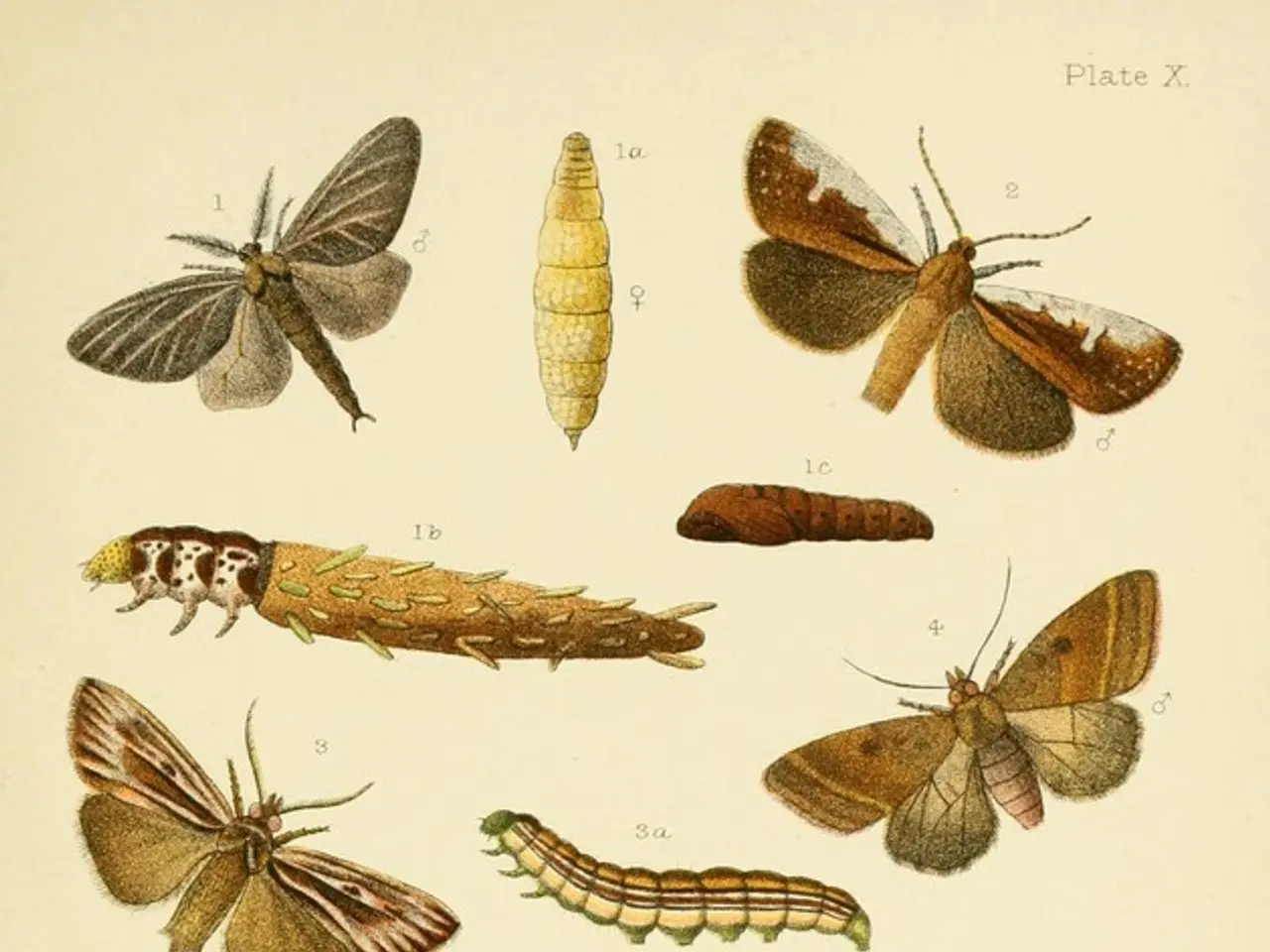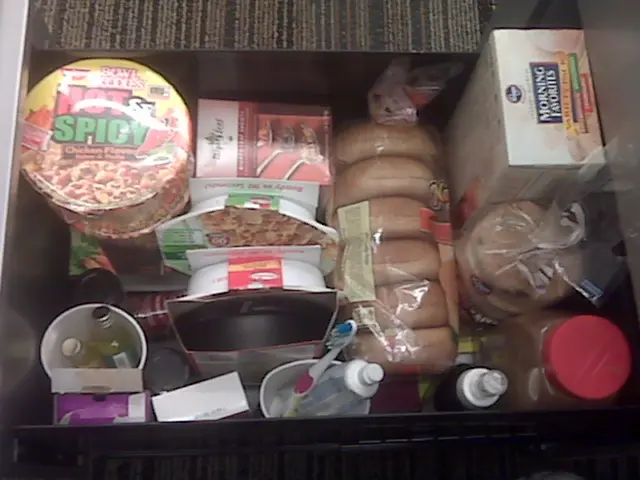Varied Structures of Eukaryotic Cell's Lipid Boundaries
The cell membrane, often likened to a protective moat, is a complex and dynamic barrier that surrounds every cell. This lively tapestry of molecules, known as the cell's fluid mosaic, plays a crucial role in regulating the entry and exit of substances, and is primarily made up of lipids, particularly phospholipids.
These phospholipids arrange themselves into a bilayer, forming the heart of the cell membrane. But the membrane is more than just a simple barrier. It's a hub of activity, hosting a variety of membrane-associated proteins and integral proteins that span its entire width.
Integral proteins create channels or pores, allowing specific molecules to pass through, while others serve as receptors, binding to specific signaling molecules and triggering a cascade of events inside the cell. Peripheral proteins, on the other hand, attach to the surface of the cell membrane and interact with lipid heads or other proteins.
Membrane modifications, such as phosphorylation, glycosylation, and lipid modifications, are essential for a cell's identity, communication, and overall health. In mammalian cells, membrane lipids and proteins are often modified with carbohydrate groups, forming glycoproteins and glycolipids, which are crucial for cell recognition, signaling, and membrane stability.
Lateral diffusion, a type of membrane dynamics, helps to evenly distribute the lipids and ensure that the membrane remains fluid. The inner leaflet of the cell membrane is rich in phospholipids and cholesterol, while the outer leaflet is adorned with glycolipids and proteins, contributing to the membrane's asymmetry.
Membrane asymmetry is crucial for various cellular processes, including how cells recognize each other from invaders. Flip-flop, another type of membrane dynamics, helps to maintain the asymmetry of the membrane by allowing a lipid to flip from one side of the membrane to the other.
Membrane-bound organelles, such as mitochondria, chloroplasts, and the endoplasmic reticulum, are like walled-off compartments that play crucial roles in cell function. Mitochondria generate energy for the cell's activities, while chloroplasts capture sunlight to create food for the cell. The endoplasmic reticulum folds and modifies proteins, acting like a conveyor belt that shapes and packages the cell's products.
Some membrane proteins act as transporters, carrying molecules across the membrane that would otherwise be impermeable. Membrane proteins are also involved in cell adhesion, allowing cells to stick together to form tissues and organs.
In essence, the cell membrane is a vibrant and essential part of the cell, regulating its interactions with the outside world and facilitating its internal activities. Its complex structure and dynamic nature are key to the cell's ability to respond to signals, recognize other cells, and maintain its structure and function.





